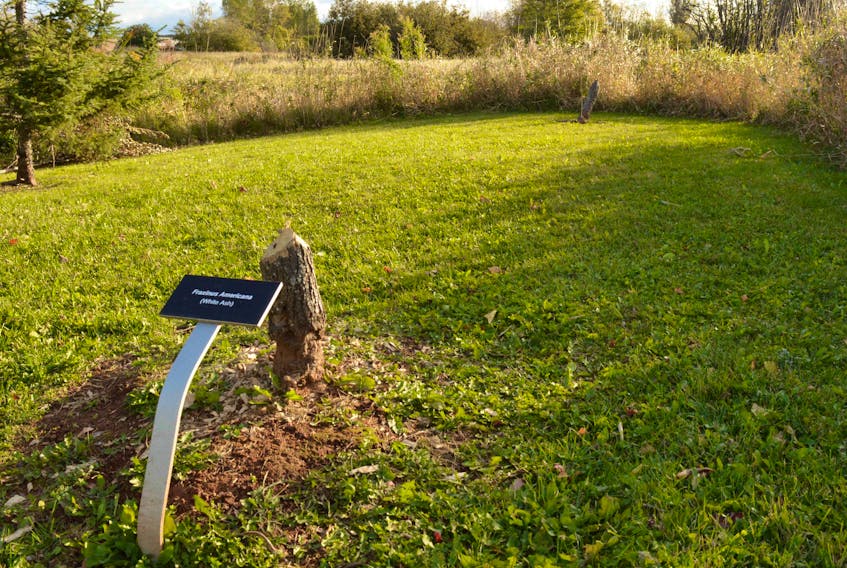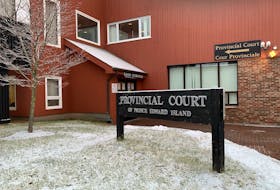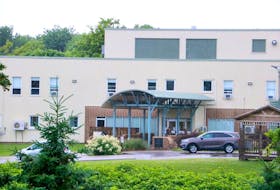SUMMERSIDE, P.E.I. — There’s no overnight camping in Summerside’s parks, but one visitor is not following the rules.
A beaver has taken up residence in Heather Moyse Heritage Park.
Near the Ottawa Street entrance, tree limbs are scattered on the lawn and in the tall wetland grasses.
A white ash tree has been completely felled along with another nearby tree.
And water in the pond is rising a little due to the dam that’s growing under the beaver’s busy efforts.
Trent Williams, parks and green spaces manager for the City of Summerside, says his mowing crew noticed the beaver’s activities in late September.
“The beaver is starting to take down mostly all of the trees that we’ve planted over the years,” said Williams. “Even worse, we’re getting nervous – there’s some large poplars which we suspect the beaver will inevitably get to which could cause some safety issues within the park.”
Five fast facts:
- Adult beavers weigh between 16 and 32 kg. A large beaver may measure 1.3 m long.
- The beaver is a graceful, strong swimmer.
- Beavers can see well both below and above water. They can also close their ears and nostrils underwater.
- Beavers may live as long as 12 years.
- Beavers need trees for shelter and food. They can cut down an average of 216 trees a year.
Aside from the loss of the trees, valued at several thousand dollars, the busy, urban park is just not the best place for the wild animal.
Beavers can be vicious if cornered, which could pose a hazard for park users and pets.
Williams said water sometimes backs up in the marsh system in heavy rain or snowmelt, and the beaver dam blocking the flow won’t improve the situation.
But it’s not a simple case of moving the critter along. It’s not ideal to re-locate wildlife at this time of year so close to winter.
Even if the beaver does settle in someplace else, it can quickly become a nuisance.
“What happens is, as they knock trees down and they build their dam, if they run out of resource, then they’ll move over to a neighbouring property,” said Williams, who has been checking in with provincial wildlife experts for advice on what to do.
“We’re going to remove the beaver; however, we’re just collecting our information and we’ll make our decision based on that,” said Williams. “We haven’t made a firm decision at this point on how we’re going to approach it.”
Alison Jenkins is a local journalism initiative reporter, a position funded by the federal government, working in Prince County.









